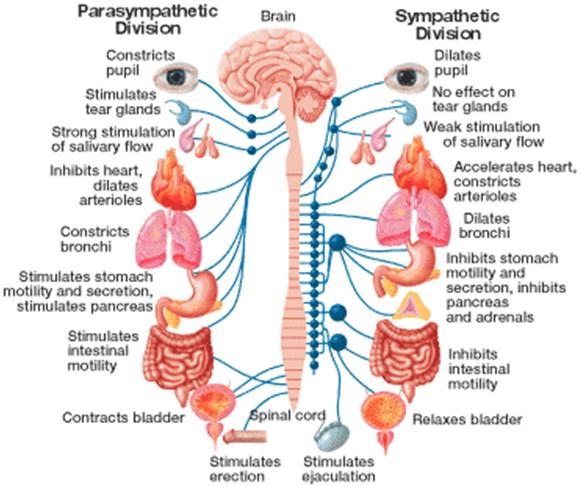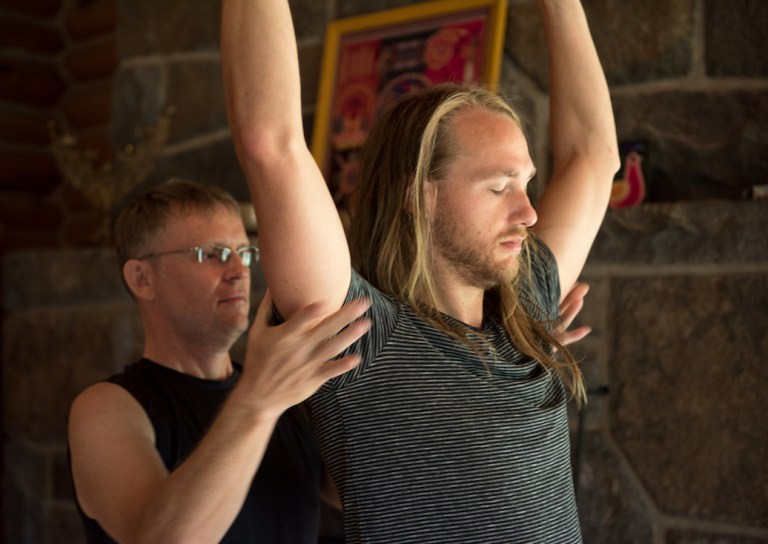In 2016, I quite my office job and decided to travel the world. I did an Ayurvedic retreat in Kerala, India in November 2016. For 5 days, I learned to meditate and I joined a very gentle Yoga practice. And that's where I fell "in love". When I discovered yoga, it became a dream to be able to teach one day.
Read more about Anja's story as a new yoga teacher
1 Comment
Our lives are pretty hectic these days. We are told that we need to work hard, get our next promotion, earn money, become the best, save for the future, answer instantly and mean something to this world. Add a child to that and you have a pretty spicy cocktail of stress and challenges on a daily basis. Our body tenses up, we hold our breath, we clench our jaw, abs, fists, butt. Whether we realize it or not, a lot of us live in a pretty “activated state” in terms of our nervous system. I know this all too well as I inherited of a sensitive nervous system. Since I was 6 years old I experienced moments of strong anxiety and sometimes panic attacks. When I was 23, I experienced my first mindfulness retreat in Plum Village, Thich Naht Hahn’s retreat center, and that sparked a journey of inner transformation for me. One that is closely linked to my own nervous system. How does our nervous system work? A big part of how we feel is related to our autonomic nervous system (ANS), which acts mainly unconsciously and regulates bodily functions such as the heart rate, digestion, breathing, pupillary response and urination. The ANS has 2 branches: sympathetic nervous system and parasympathetic nervous system. The sympathetic nervous system (SNS) is sometimes called the “Fight and Flight” response. It becomes active when we perceive a threat and we need to act quickly to stay safe. Our pupils dilate, blood is send into our skeletal muscles and lungs, our heart rate increases and breathing quickens. We may feel a sense of fear (flight) or aggressive energy (fight). When the perceived threat is even more intense and fighting or running away don’t seem like an option, our system goes into a “freeze” response. If you look at the animal world for instance, the gazelle will first try to run for its life when chased by a lion. If the lion gets close, the gazelle might drop to the floor, pretending to be dead before being caught. It might lose consciousness, hold its breath and be paralyzed. The body will pump endorphins to numb the pain if it is eaten alive. The parasympathetic nervous system (PSNS) is called the “Rest and Digest” response. We feel calm, grounded and safe. Our pupils constrict, our blood flows to our digestive track and into our skin, our heart rate and breathing slows down. It is important to spend enough time daily in our parasympathetic system to be able to digest, restore and rejuvenate. Nowadays lions are not that common anymore but our system still reacts in the same way. The perceived threat may be our boss, a deadline or maybe an idea of something that might happen. You may notice that you work on adrenaline energy, that you are often in a rush, or that life feels like a constant struggle. Your digestive system might not be functioning well or you experience tension or chronic pain. Those are signs of fight and flight. You may feel a sense of numbness, disconnection from your body, your breath or your emotions, signs of a freeze response or dissociation. Doesn’t sound fun right? So, is there something we can do to activate our PSNS so that we can find rest, inner peace and a sense of wellbeing? I did some research and here are some simple tips for you: 1. Take deep and slow diaphragmatic breaths, into your abdomen. Even though your breath normally happens automatically, you can consciously breath deeper and slower and in this way activate your PSNS. Breathing slowly will also slow down your heart rate. The vagus nerve, the longest nerve in the human body, is one of the main components of the parasympathetic nervous system. It communicates with the lungs, heart, digestive track and many other organs. The vagus nerve runs through your diaphragm which means that when you take those deep breaths down into your abdomen, you tone your vagus nerve. You may start to feel calmer and more peaceful. 2. Chant, hum or sing. This will regulate the rhythm of your breathing and make your exhale longer. Our exhale causes a vagal response which slows down our heart rate. Research on singing has shown that is has a relaxing effect on the body. My favorite practice is Brahmari mudra: you close your eyes and ears with your finger tips and hum. Do this 5 times and feel the vibration in your head. 3. Consciously relax your body, especially the muscles around your eyes, jaw, neck and shoulders, abdomen, hands and feet. There are many ways to practice this. You can - use a body scan and invite each body part to relax - firmly engage each body part and then release it - gently move or self-massage those areas - try TRE, Tension Release Exercises, which uses involuntary tremors to release tension 4. Practice yoga with your eyes closed or with a soft gaze. You tend to move about 20 to 30% slower with your eyes closed. Slowing down your movement will bring more awareness to your body, slow down your breath and therefore also your heartbeat.
Laurence Gilliot is the director of Pranaya Yoga and main teacher of the Pranaya Yoga Teacher Training. Join the training to learn more about Yoga & Ayurveda and its connection with the nervous system.
This article is written by Ann Jablonski and appeared on shutupandyoga.com.
Globetrotting yoga teacher Gernot Huber brings to light movement patterns that keep our yoga practice from reaching its full potential. Yoga master T.K.V. Desikachar is quoted as saying that our yoga practice should be smarter than our habits. Thailand-based yoga teacher Gernot Huber is on a mission to help students heed that advice. Read more |
Pranaya Yoga TeamLaurence Gilliot, Gernot Huber, Rosemary Bolivar and Lek Kittikunaudul share their insights and knowledge on Yoga Archives
April 2019
Categories |






 RSS Feed
RSS Feed
